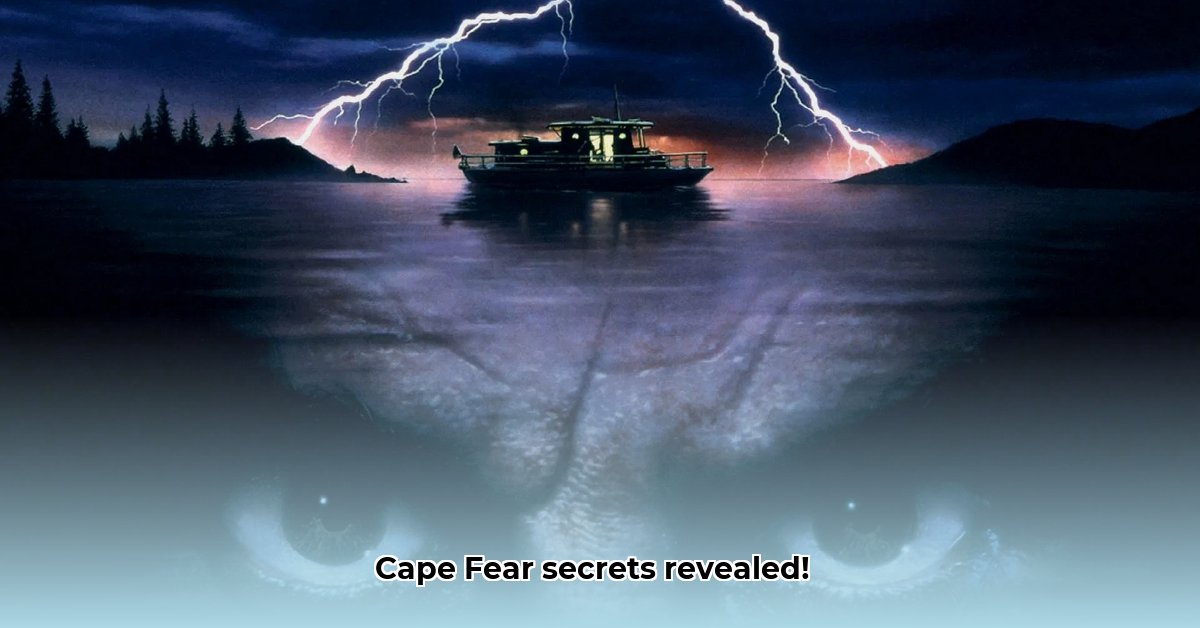
Cape Fear's Cast: More Than Just Faces in a Thriller
The 1991 remake of Cape Fear isn't just a good film; it's a masterclass in cinematic suspense. Its success, however, extends far beyond a compelling script. This article delves into the meticulous collaboration that transformed Cape Fear into a box office hit and a critical darling, focusing on the key players who created its unforgettable atmosphere of dread.
Casting: The Faces of Fear and Fascination
Robert De Niro's Max Cady wasn't just a villain; he was villainy personified. His chilling performance redefined on-screen menace. Nick Nolte, as Sam Bowden, provided the perfect counterpoint: a relatable hero grappling with unimaginable terror. Jessika Lange's Leigh Bowden added a layer of resilience often missing in similar thrillers. Juliette Lewis, as Danielle Bowden, brought an unnerving vulnerability to the role the teenage daughter caught in the crossfire, perfectly capturing the film's overall unsettling atmosphere. The supporting cast, too, played crucial roles, contributing to the overall sense of claustrophobic dread.
The Camera's Eye: Painting Shadows and Suspense
Cinematographer Frederick Elmes, working closely with director Martin Scorsese, employed classic film noir techniques—shadows, darkness, and strategic close-ups—to build suspense. The close-ups weren't gratuitous; they plunged the audience directly into the characters' emotional turmoil, creating an immersive experience. The film’s visual language was crucial in conveying the escalating tension and unease.
Sounds of Dread: A Symphony of Terror
Elmer Bernstein's haunting score is more than mere background music; it's a character in itself, weaving a tapestry of dread. The sound design, from subtle creaks to jarring bursts of violence, added another layer to the film's unsettling atmosphere. The combination of Bernstein's score and the film's precise sound effects created a truly immersive and terrifying soundscape, leaving viewers on the edge of their seats. A question arises: could the film's impact have been achieved without such a finely tuned soundscape? The answer, undoubtedly, is no.
The Behind-the-Scenes Crew: The Unsung Heroes
The success of Cape Fear extends far beyond the acting prowess of its cast. The editing, special effects, and makeup departments all contributed to the film's exceptional quality. A glance at the IMDb credits reveals the extensive team behind the scenes, each member playing a pivotal role in creating the film's chilling atmosphere. Their collective efforts underscore the collaborative nature of filmmaking and the importance of each individual's contribution to the final product. This collaborative spirit is showcased in the film's highly effective use of resources, leading to a highly successful and critically acclaimed movie.
How Cape Fear's Crew Size Impacted its Production Success
Cape Fear's success wasn't solely due to a brilliant script or star power; a large, skilled crew played a vital role. The scale of the production allowed for meticulous attention to detail across all departments. The cinematography, sound design, and editing, all benefited from specialized expertise. The film's overall polish and technical brilliance are a direct result of this collaborative effort.
Assembling the Team: A Symphony of Talent
The film’s success required a large, highly skilled team. The cinematography, for instance, involved numerous professionals, ensuring every shot was technically perfect and tonally consistent. Similarly, the music and sound design necessitated a large, specialized crew. Every individual, from the gaffer to the sound mixer, played a crucial role, underscoring the importance of a well-organized and talented team in creating a successful motion picture. The film's success, exceeding $100 million at the box office, demonstrates the effectiveness of this approach.
The Impact of Scale: More Hands, More Success?
The size of the crew allowed for a level of detail that wouldn’t have been possible with a smaller team, ensuring that the film’s atmosphere and suspense were expertly crafted. The film is a practical demonstration of the principle that a bigger, well-organized crew can significantly enhance the quality of a production, especially one reliant on atmosphere and suspense, as Cape Fear clearly is. The film's critical success highlights the efficacy of this approach.
The Star Power: Robert De Niro and Beyond
While De Niro's performance is iconic, the success of the film also hinges on the supporting cast's chemistry. Their superb performances created a believable, highly charged family dynamic that added another level of narrative depth. The film’s overall success, both critically and commercially, is a testament to this collaborative spirit and the importance of a strong supporting cast.
A Legacy of Fear: Cape Fear's Enduring Impact
Cape Fear remains a chilling masterpiece, a testament to the power of collaboration in filmmaking. Its success stands as a valuable lesson for aspiring filmmakers, demonstrating that careful attention to detail, in every aspect of the production, can lead to a film that stands the test of time and continues to fascinate and chill audiences for years to come.